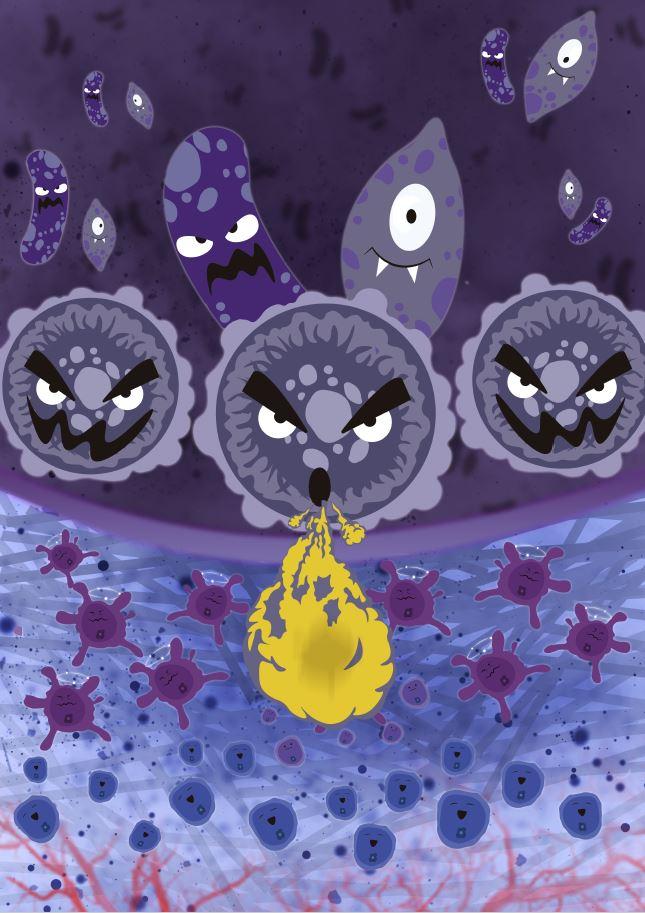Immune cells found as accomplices in melanoma spread

A new study published today in Cell has revealed that aggressive melanoma cells are able to manipulate the immune system to their advantage. As a result, immune cells that are supposed to recognise and destroy cancer cells actually behave differently and support the growth and spread of the tumour.
The ability of cancer to spread from one part of the body to another, known as metastasis, is responsible for over 90% of cancer-related mortality. The study, led by Professor Victoria Sanz-Moreno from our Centre for Cancer and Inflammation and funded primarily by Cancer Research UK, set out to better understand the changes occurring in metastatic melanoma cells and their environment that facilitate tumour progression.
Interactions at the 'invasive front'
Cancer cells that have the ability to spread tend to form an ‘invasive front’ around the edge of a tumour, where they interact with the normal cells that surround them. By examining primary melanoma samples from patients, the team (comprised of researchers from the BCI, King’s College, London, the Francis Crick Institute and the University of Lleida) observed that the cancer cells of the invasive front were surrounded by immune cells called macrophages (a type of white blood cell).
Under normal circumstances, macrophages help to eliminate cancer cells and fight infectious agents. However, further experiments in cells and pre-clinical models revealed that the aggressive melanoma cells release specific signals that attract immune cells to the tumour. These signals alter the tumour environment and re-educate the immune cells, converting them to macrophages that support tumour growth.
Blocking the signals to stop immune cell reprogramming
The team found that the release of these ‘immunomodulatory’ signals from the cancer cells is controlled by a protein called Myosin II. Myosin II plays a role in remodelling of the cell cytoskeleton (a structure that helps cells to maintain their shape), which is an essential process for cell migration.
Drugs already exist that target the Myosin II pathway and the cytoskeleton, which are used for the treatment of conditions such as glaucoma and cerebral vasospasm. By re-purposing these drugs in experimental models, the team were able to block the release of signals that reprogram the immune cells, preventing cancer progression.

Professor Sanz-Moreno said: "This study highlights how cancer cells interact with and influence their surrounding environment to grow and spread. By using drugs that inhibit Myosin II we were able to reduce the growth and spread of melanoma, since such tumours could no longer educate macrophages."
In future experiments, the team endeavour to combine drugs that block migration and invasion of cancer cells with other types of drugs, such as immunotherapies or targeted therapies. The team will also further investigate the role of the cytoskeleton in the regulation of immune responses in tumours.
Professor Sanz-Moreno added: “We are excited to find out whether inhibitor drugs could be used in combination with other targeted therapies. By identifying effective treatment combinations, we hope that in the future Myosin II pathway inhibitors could be used to improve patient outcomes and reduce the risk of melanoma coming back.”
The research was also supported by Barts Charity, NIHR BRC, the Harry J. Lloyd Charitable Trust, Fundacion Alfonso Martin Escudero, Marie Sklodowska-Curie Action, Fundación Ramón Areces, the Medical Research Council, the Academy of Medical Sciences, the Francis Crick Institute and Worldwide Cancer Research.
Category: General News, Publications

No comments yet